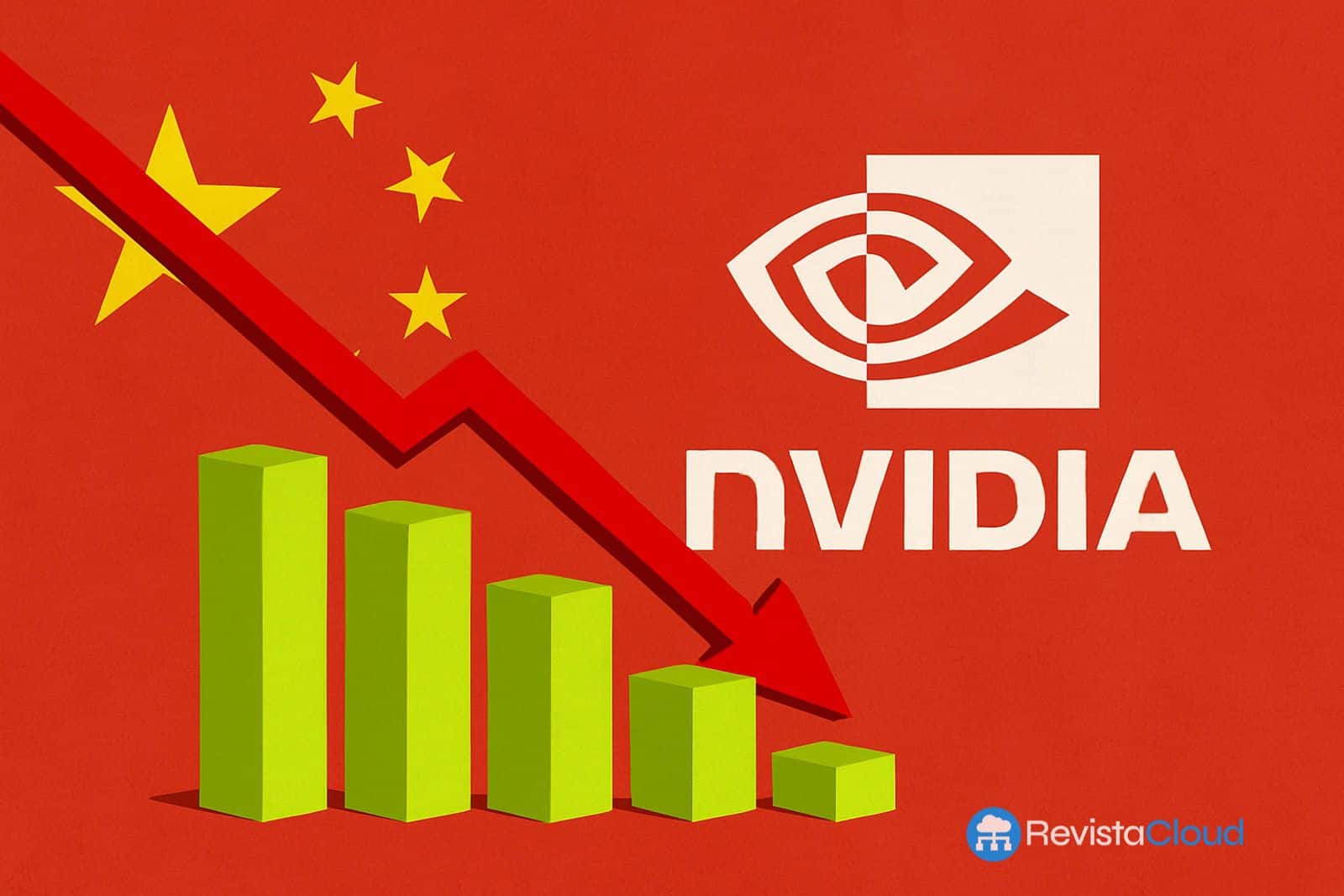During his speech at the Computex 2025 tech fair, NVIDIA’s CEO, Jensen Huang, delivered a direct critique of U.S. export policies toward China, asserting that the imposed restrictions are seriously undermining the competitiveness of American companies. The most striking fact he presented: NVIDIA has gone from controlling 90% of the AI chip market in China to just 50% in less than a year.
According to Huang, this decline is not due to direct technological competition but rather to geopolitical decisions that have prevented NVIDIA from operating freely in the Chinese market. “If the goal of the restrictions is to ensure that the U.S. continues to lead in AI, the truth is that they are causing us to lose our advantage,” declared the executive.
The Loss of Market Share: Strategic Error or Intended Consequence?
Not long ago, NVIDIA was the dominant player in the Chinese hardware market for AI, thanks to its powerful high-end GPUs like the A100, H100, and adapted versions like the H20. However, following the restrictions imposed by the Biden administration—continuing the hardline stance initiated by Trump—sales to China were curtailed by export control measures aimed at hindering the technological development of the Asian country.
The result, according to Huang, has been the strengthening of local competitors like DeepSeek, which is already beginning to internationalize its technology after making strong inroads into markets like Malaysia.
“The basic assumptions underlying these restrictions were wrong. We underestimated China’s ability to adapt and create alternatives,” Huang noted.
The Real Battleground: Advanced Packaging
Beyond geopolitical tensions, Huang focused much of his speech on what he considers the core of AI progress: advanced packaging technologies like CoWoS (Chip on Wafer on Substrate) and its successor, SoW (System on Wafer). In the CEO’s words, “Moore’s Law has hit a ceiling,” and the future of chips no longer depends on how many transistors fit on a single die, but on how multiple chiplets are interconnected efficiently.
“NVIDIA has no choice but to use CoWoS. Without advanced packaging, we couldn’t keep up with the pace of innovation that current AI requires,” Huang stated during the press conference.
This type of technology, provided by TSMC, enables the creation of modular processing structures that are much more powerful and scalable than traditional monolithic designs. According to Huang, systems like Grace Hopper or Blackwell would not be possible without these advancements.
Is China Closing the Complete Loop?
While the U.S. imposes restrictions and loses ground in a strategic market, China continues to develop its own AI supply chain, from silicon to training frameworks. The recent expansion of its chips and software into Southeast Asia suggests that the country may be completing its technological autonomy, something that previously seemed distant.
Additionally, the adoption of technologies like RISC-V, as well as advancements in local packaging and lithographies below 7 nm—despite the sanctions—reinforce Huang’s argument: leadership in AI is not enforced through blockades but through adaptation speed and real innovation.
What Does This Mean for NVIDIA’s Future?
In the short term, NVIDIA faces an uncertain landscape in China, one of its key markets. Although it maintains a dominant position globally, losing 45% market share in the world’s largest AI market could impact its revenues and future strategies. In the long run, the challenge will not only be competing with AMD, Intel, or Western startups but also with a new generation of Chinese companies that have found the perfect stimulus to no longer rely on the West.
Key Points from Huang’s Message at Computex 2025:
From 90% to 50% market share in China in less than a year.
U.S. restrictions are “eroding” the competitive advantage of companies like NVIDIA.
The key to the future of AI lies in advanced packaging, not isolated silicon.
The Chinese ecosystem continues to grow and is already exporting technology to countries like Malaysia.
- Moore’s Law is no longer sufficient: the future hinges on architecture and connectivity.
Conclusion: Jensen Huang has delivered not only a political critique but also a technological warning. While the U.S. bets on control, China accelerates its development. If NVIDIA, the giant that led the AI revolution, is losing ground, it’s time to rethink strategies.
Who will win this race? As Huang says, “It’s not who blocks the most that wins, but who adapts the fastest.”

